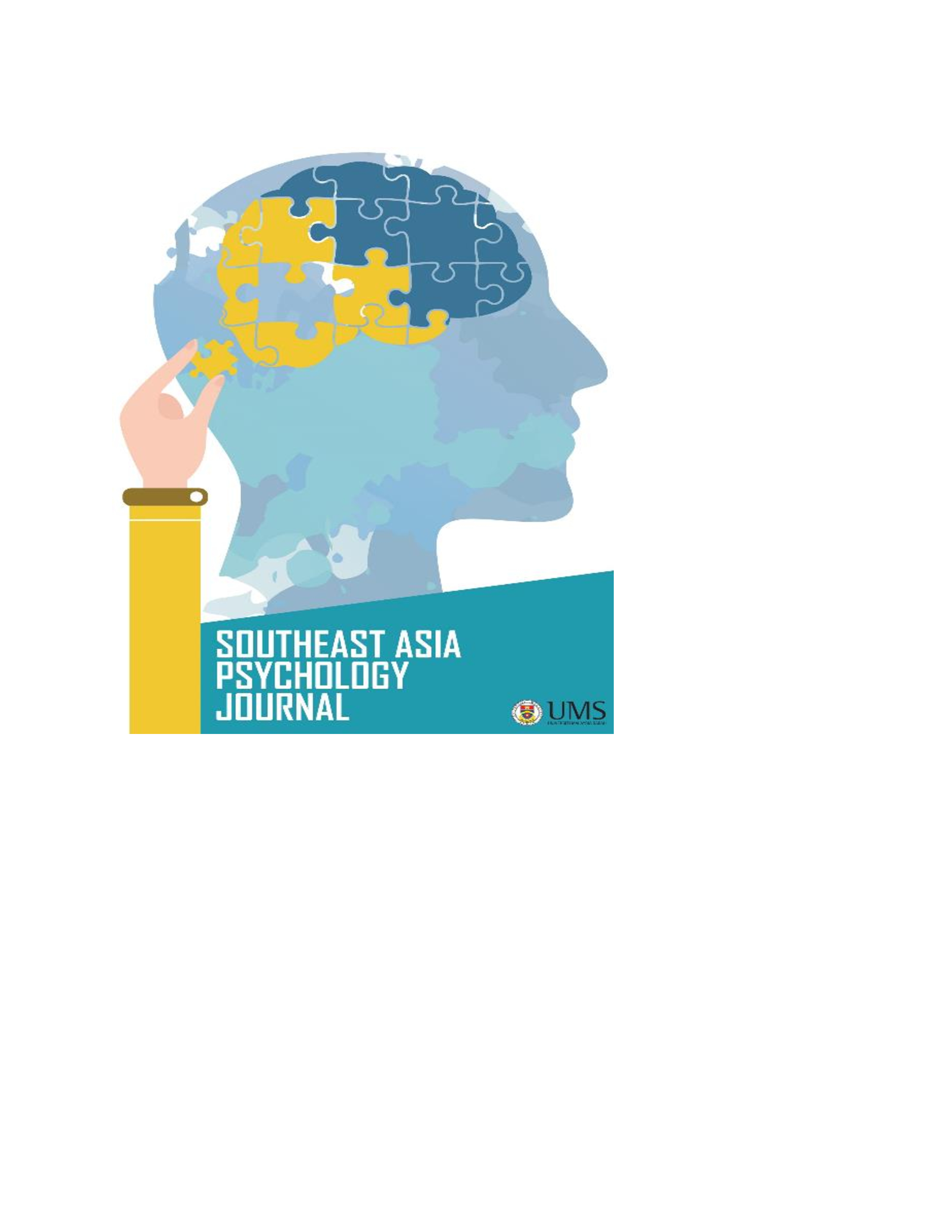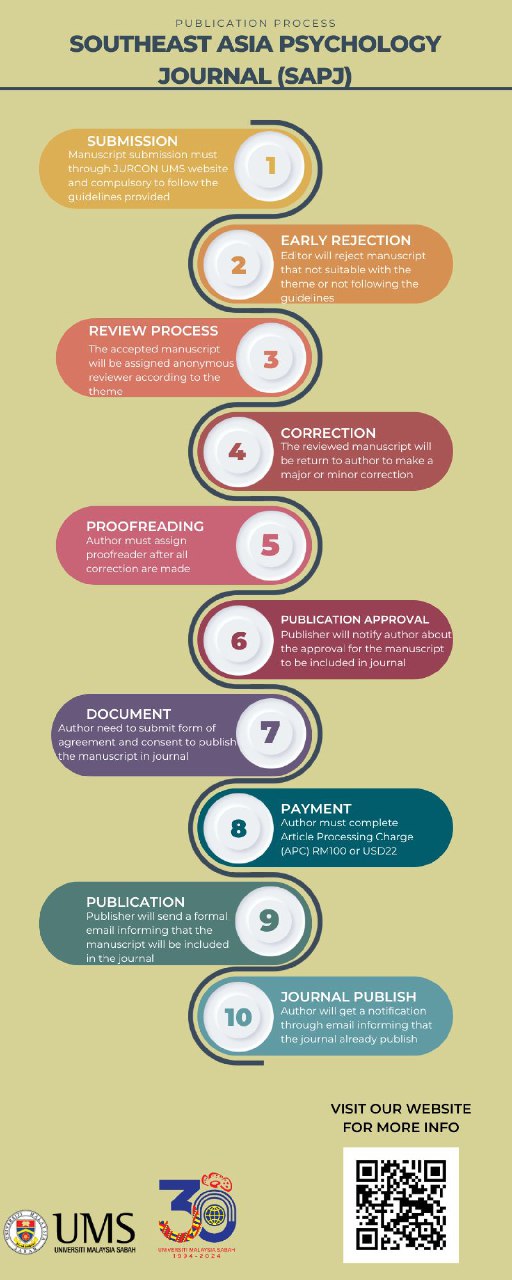PUNCA DAN KESAN MEDIA BERUNSUR AGRESIF TERHADAP TINGKAH LAKU REMAJA DI JOHOR BAHRU
DOI:
https://doi.org/10.51200/sapj.v10i2.4946Keywords:
Adolescents, Aggressive Media, Aggressive Behavior, ViolenceAbstract
This study aims to examine the causes and effects of aggressive media on adolescent behavior. The respondents are adolescent who are also a highschool students in Johor Bahru. A total of 227 respondents consisting of 158 males and 69 females were involved in this study. A set of research instruments in the form of a questionnaire was used for the purpose of data collection. Part A is the demographic part. While part B, it is to explain the research objectives and to test the hypothesis. Questionnaire items in Part B are measured using a five-point Likert scale. The data obtained was processed using the Statistical Package for Social Science, Version 26.0 (SPSS) for descriptive and inferential analysis. A pilot study was conducted to measure the reliability of the questionnaire. The findings show that online games are the most dominant influence toeards the aggressive behavior of teenagers in Johor Bahru with a mean of 4.20. The findings also show that the effect of aggressive media, the reasons for watching aggressive, and the form of media programs are not a good predictor of adolescent aggressive behavior because only contribute 15%. This study has implications on the role of media that are to re-evaluate the broadcast programs to minimize aggression and violence elements that can cause adolescent aggressive behavior.
References
Amir Hasan Dawi (2002). Penteorian sosiologi dan Pendidikan. Tanjung Malim:Quantum Books.
Anderson,C.A. & Bushman, B.J. (2001). Effects of violent video games on aggressive behavior, aggressive cognition, aggressive affect, physiological arousal, and prosocial behavior: A meta-analytic review of the scientific literature. Psychological Science, 12, 353-359.
Anderson, C. A., & Bushman, B. J. (2001a). Effects of violent video games on aggressive emerging adults: Associations with hostile attribution bias and normative beliefs. Journal of Youth and Adolescence, 37, 713–722.
Anderson, C.A., Berkowitz, L., Donnerstein, E., Huesmann, L. R., Johnson, J. D., Linz, D., Malamuth, N.M., & Wartella, E. (2003). he influence of media violence on youth. Psychological Science in the Public Interest. (4) 3: 81-110.
Archer, J. (2004). Sex differences in aggression in real-world settings: A meta-analytic review. Review of General Psychology, 8, 291-322.
Bandura, A. 1977. Social learning theory. Englewood Hills, NJ: Prentice-Hall
Bushman, B.J., & Anderson, C.A. (2002). Violent video games and hostile expectations: A test of the general aggression model. Personality and Social Psychology Bulletin, 28, 1679-1686.
Caughy, M.O.B., Nettles, S.M., O'Campo, P.J., Lohrfink, K.F. (2006). Neighborhood matters: Racial socialization of African American children. Child Development, 77(5):1220–1236.
Donnerstein, E. (2011). The media and aggression: From TV to the Internet. In J. P. Forgas, & A.W. Kruglanski (Eds.), The psychology of socialconflict and aggression (pp. 267–284). New York: Psychology Press.
Engelhardt, C. R., Bartholow, B. D., Kerr, G. T., & Bushman, B. J. (2011). This is your brain on violent video games: Neural desensitization to violence predicts increased aggression following violent video game exposure. Journal of Experimental Social Psychology, 47, 1033–1036.
Funk, J.B. (2005). Children's exposure to violent video games and desensitization to violence. Child and Adolescent Psychiatric Clinics of North America, 14, 387-404.
Gentile, D.A., & Anderson, C.A. (2003).Violent video games: The newest media violence hazard.In D.A.Gentile (Ed.), Media violence and children (pp.131–152).Westport, CT: Praeger.
Hughes D, Witherspoon D, Rivas-Drake D, West-Bey N. (2009). Received ethnic–racial socialization messages and youths’ academic anbehavioral outcomes: Examining the mediating role of ethnic identity and self-esteem. Cultural Diversity and Ethnic Minority Psychology, 15(2):112–124.
Kirsh, S.J. (2009). Media and youth: A developmental perspective. Oxford: John Wiley & Sons.
Krahé, B. (2012). Report of the media violence commission. Aggressive Behavior, 38, 335–341.
Kwak, H., Blackburn, J., & Han, S. (2015). Exploring cyberbullying and other toxic behavior in team competition online games. Proceedings of the 33rd Annual ACM Conference on Human Factors in Computing Systems, April, 3739-3748.
Leenaars, L., & Rinaldi, C.M. (2010). Male and female university student’s experiences of indirect aggression. Canadian Journal of School Psychology, 25, 131-148.
Ma’rof Redzuan (2001). Psikologi sosial. Serdang: Universiti Putra Malaysia.
Moroschan, G., Hurd P.L., & Nicoladis, E. (2009). Sex differences in the use of indirect aggression in adult Canadians. Evolutionary Psychology, 7, 146-159.
Orestes, P. M. (2002). Song to avoid after the tragedy. London: Sage Publication








